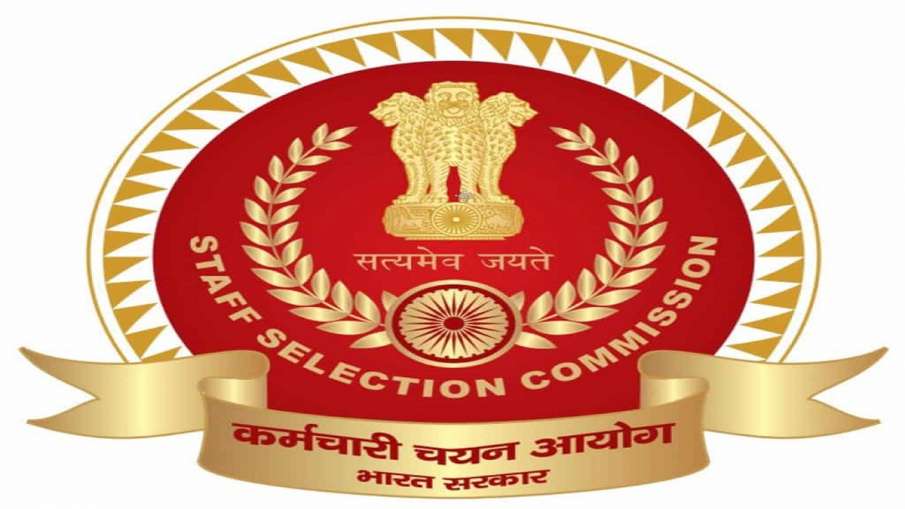It is not contrary to international tax principles and does not discriminate particularly against U.S. firms
Last month, a United States Trade Representative (USTR) investigation report found India’s Digital Services Tax (DST) to be discriminatory. It said the tax is “inconsistent with prevailing principles of international taxation”, and burdens or restricts U.S. commerce. India has denied these charges. The bone of contention is a 2% tax that India has charged since April 2020 on revenues from digital services, applicable only to non-resident companies. In a discussion moderated by Sriram Srinivasan, Suranjali Tandon and Nikhil Kapoor discuss this issue. Edited excerpts:
India introduced a 6% equalisation levy in 2016. From then to taxing a broader basket of online services in 2020, how do you view what India has done, especially in the context of the rest of the world?
Suranjali Tandon: We have to rewind to 2013, when the Base Erosion and Profit Shifting (BEPS) programme by the OECD [Organisation for Economic Co-operation and Development] was launched at the behest of the G20 countries. Under the 15 action points, action point one was to look at the tax challenges of the digital economy. By 2015, action point one still remained a work in progress.
The main problem was to find a new way of taxing digital companies that are not adequately taxed because of how the rules are designed. So, the primary concern was that companies don’t have a physical location in the markets where they operate. And use the intangibles, which are hard to value.
India, in 2016, became the first country to implement the equalisation levy, on advertising services at 6%. This was basically on payments made to a non-resident by a resident advertising on the platform. The thinking was that when a solution is reached at the global level, this would sort of be phased out.
In 2019, in a sharp departure from its original thinking, OECD put out a policy note saying that there’s an elephant in the room, which is the redistribution of taxing rights, which this action point seems to bring up again and again, and unless we address this, finding a consensus will be difficult.
Different countries took different positions. India, originally in 2018, had introduced a test for significant economic presence in the Income Tax Act, according to which, if a company had users in India, it sort of defined its economic connection with India, and therefore gives India the right to tax. While this was introduced in the Act, it did not have any value because the treaties would have to incorporate a similar provision for it to be applicable.
Fast forward to 2020, and the U.S. in the G20 meeting said even if OECD does find a consensus, there should be an option of applying some safe harbour basis, which is to say that the company can choose whether this consensus applies. This startled a lot of countries. They were apprehensive that tomorrow if a safe harbour basis were to be applied, would it serve the purpose.
And to contextualise India’s equalisation levy, this was the sort of conversation brewing at the international level. In a surprise move, the new equalisation levy, which expands the scope significantly, even to e-commerce, was introduced in 2020. And after that, the U.S. has taken a stance that it would interrogate such measures as a hindrance to its commerce and trade. And irrespective of the position that the U.S. takes on this, countries such as France, India, and 10 countries against which the investigations have been initiated, have taken a position to say that this might be perhaps an interim solution.
Nikhil Kapoor: In 2016, the Akhilesh Ranjan Committee Report had suggested that in order to create a level-playing field between online businesses and brick-and-mortar businesses, digital businesses which do not have a physical presence in India but are able to enjoy a sustainable economic presence should be paying a certain amount of tax. This was how the equalisation levy of 2016 was conceptualised.
India has always maintained that once there is a global consensus, it would cease to keep the equalisation levy in force. India has been engaged in the global discussions at the OECD level. And OECD had promised to deliver a consensus-based solution by mid-2019. That did not happen owing to the pandemic, but because of the growing needs of India to generate tax revenues, this was a sudden move that took the entire digital community by surprise.
Unlike the 2016 levy, this 2020 levy was devoid of any sort of public consultation. It was a major surprise for the digital community. And that is perhaps why the first two deadlines for paying the equalisation levy 2020 was also missed by a lot of multinationals.
Even other countries introduced DSTs akin to India’s equalisation levy. However, these have not been devoid of public consultation. For instance, the U.K. DST underwent significant public scrutiny, and the result is that it is more sound than what perhaps India’s levy is.
How different is the U.K. tax?
Nikhil Kapoor: One of the primary criticisms against India’s equalisation levy is that it is a tax on revenue as opposed to being a tax on profits. The U.K. allows companies to not pay any tax if their net operating margin is negative.
Another would be a transaction that involves three jurisdictions. Take the example of an Indian user located in the U.K., receiving services from a U.S. company. The U.K. DST contemplates that only 50% of the revenues from such a transaction would be chargeable to the U.K. DST. This makes it a better law.
Another major difference is that companies that sell their own inventories are explicitly excluded from the scope of the U.K. DST. Whereas, India’s equalisation levy covers everything under the sun.
Suranjali Tandon: The U.K. makes a slight departure in terms of details and it’s slightly different from how India has implemented it. But the U.S. also looks at the U.K. taxes in some way as discriminatory.
The USTR report finds India’s DST problematic. But is it discriminatory?
Nikhil Kapoor: The investigation finds that India’s equalisation levy discriminates against U.S. companies in particular. The reason for it is that the tax incident by design is on non-resident companies. And because the incident of the equalisation levy is mostly on U.S. companies, which is 72%. It’s arbitrary, as per the U.S.
I don’t really find any objection to this because the law is arbitrary. But there are several grounds which are not in consonance with what could be a valid reason to call a certain act as discriminatory. For instance, the report claims that India’s approach to taxing just non-residents is quite unique, but that is not true.
The USTR report also says that the same services offered non-digitally are not taxed, and this is leading to a ring-fencing of the digital economy. The Akhilesh Ranjan Committee Report said the idea behind the equalisation levy was to create a level-playing field between the ordinary businesses that have a physical presence in a country and pay regular taxes and the ones that are operating digitally that can avoid such taxes. I cannot say that the law is very clear but to say that it’s discriminating particularly against U.S. companies would essentially be overstepping.
The report also claims is that DST taxes companies with no permanent establishment in India, contravening international tax principles. Now, the BEPS project is based on the fact that digital companies are able to enjoy sustained economic presence in other jurisdictions without being physically present. The international community is moving towards a scenario where such transactions ought to be taxed. Therefore, to say that it’s contrary to international tax principles would be overstepping a little.
The report also claims that DST taxes a company’s revenue rather than its income. This is inconsistent with international tax practice that income, not revenue, is the appropriate basis of corporate taxation. Over here also, since the issue of taxing digital companies is unique, a lot of scholars have argued that taxing revenue for digital transactions as location-specific rent is more feasible than a digital presence, because it would lead to lesser compliance costs.
Suranjali Tandon: Why is it seen as discriminatory? One is that they say that it applies to only U.S. companies. I find there’s a problem with the argument, because if the market itself is dominated by U.S. firms, the fact that it applies to those firms may be the result of the market structure.
Is it unreasonable? Well, to the extent that clarifications were not issued, perhaps it’s unreasonable.
But other than that, the threshold that India has laid down for the equalisation levy is actually much below what the EU envisages.
The report also makes the mention of it violating the principles of international tax. If the companies that currently operate within that framework do not stand up to the measures or the principles of international tax, the introduction of a tax to plug that gap should not be looked at as a perverse move.
What could happen next? Retaliation by way of tariffs?
Nikhil Kapoor: See, this issue becomes very political in the sense that Section 301 investigations had themselves become obsolete before the Donald Trump administration came in. Now, Section 301 investigations are unilateral in nature, because the USTR is essentially deciding whether a measure is violative of the U.S.’s rights. So, there is an inherent bias as to what the findings are going to be. But I believe they would want to collaborate with India and find an amicable solution rather than imposing strict trade tariffs, which is what happened between France and the U.S.
The criticism against Section 301 investigations is that after the WTO law and the dispute settlement mechanism came into picture and the scope of the General Agreement on Trade in Services were expanded to include services as well, countries have been of the view that an international body should be looking at such disputes. And because it’s not the Trump administration now, the way Section 301 investigations are going to be used in the future is still something that remains to be seen.
How do you see a consensus on the broader issues emerging?
Suranjali Tandon: There are a few ways forward. The position that India has taken is to remain committed to the OECD process, to influence it, and to say that there are ways to tweak this design, because it will be put out in June 2021. So, the design could be worked out better to take into consideration the interests of the developing countries. Second, the United Nations is taking some sort of leadership on this to design its own proposal, which is an automated DST which is to say that within the existing treaty framework today, we introduce a withholding on payments that are made from markets to jurisdictions. And third, which I think is a possibility, maybe to apply the DST and then allow countries to bilaterally negotiate with their respective partner countries a process of crediting this tax.With Thanks-The Hindu
Your support – what is your opinion about these news. Tell us in the comment box on Facebook. Like our Facebook page to see the latest news and videos from city to country–Click here to subscribe to our news channel
Follow us on Facebook http://facebook.com/HamaraGhaziabad
Follow us on Twitter http://twitter.com/HamaraGhaziabad
















Discussion about this post